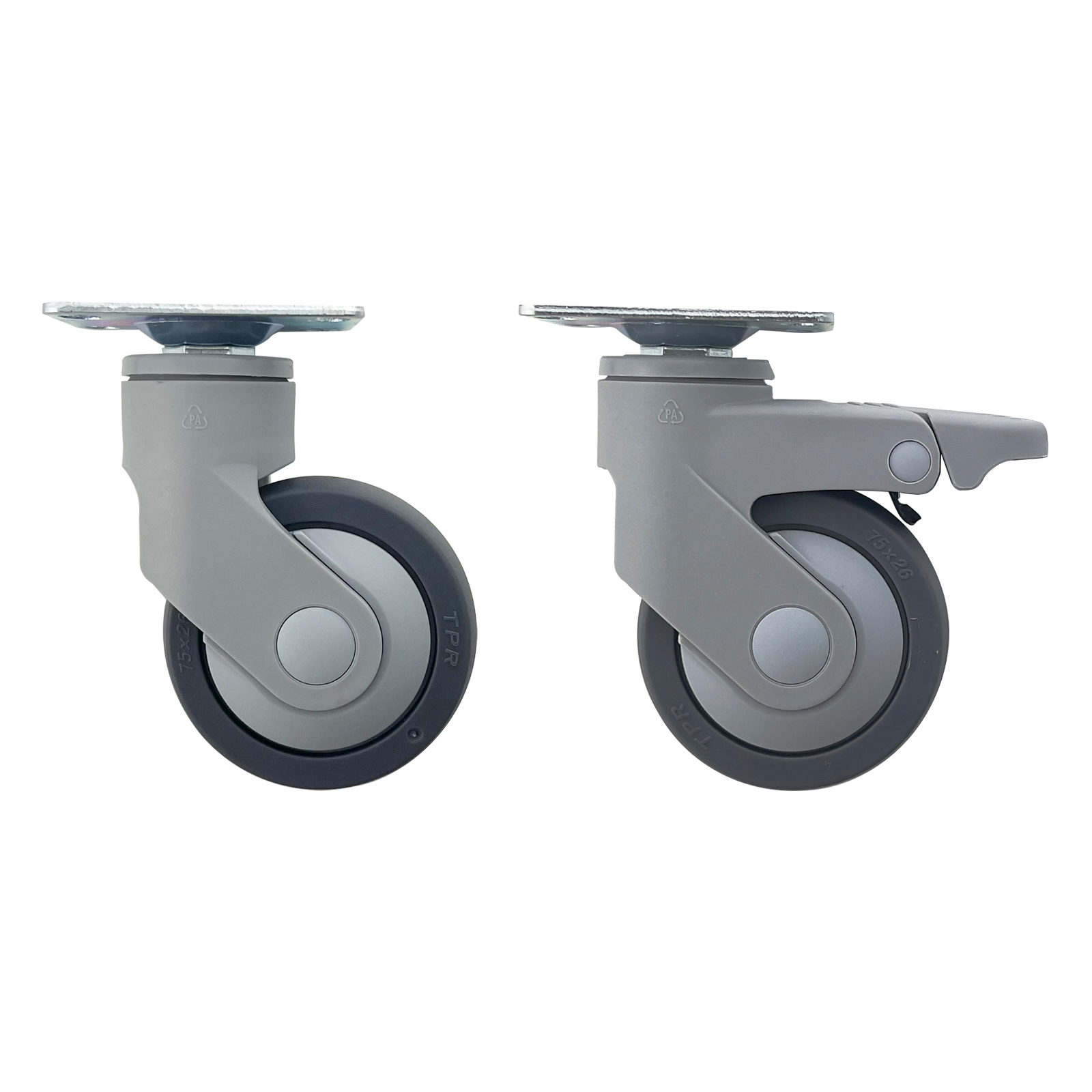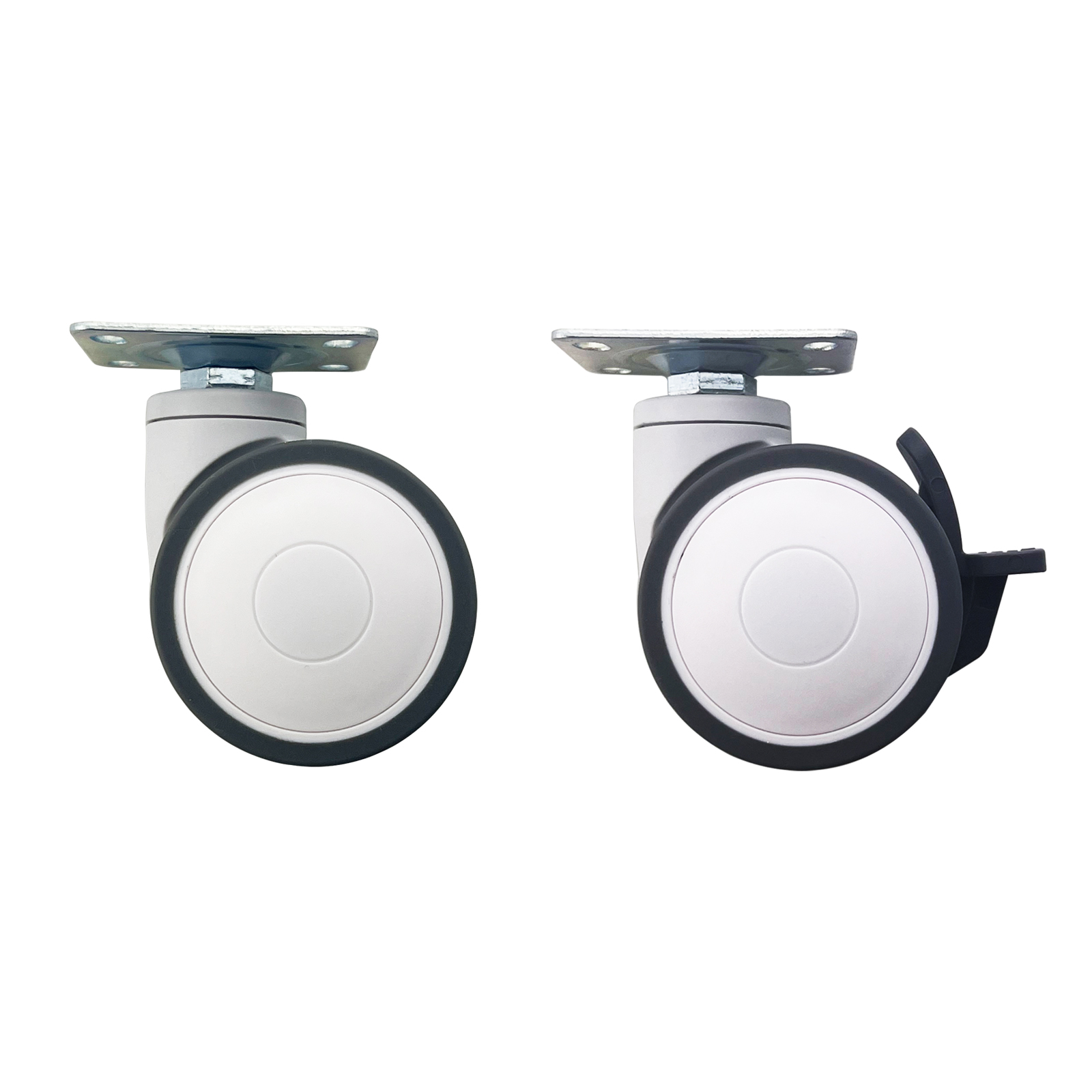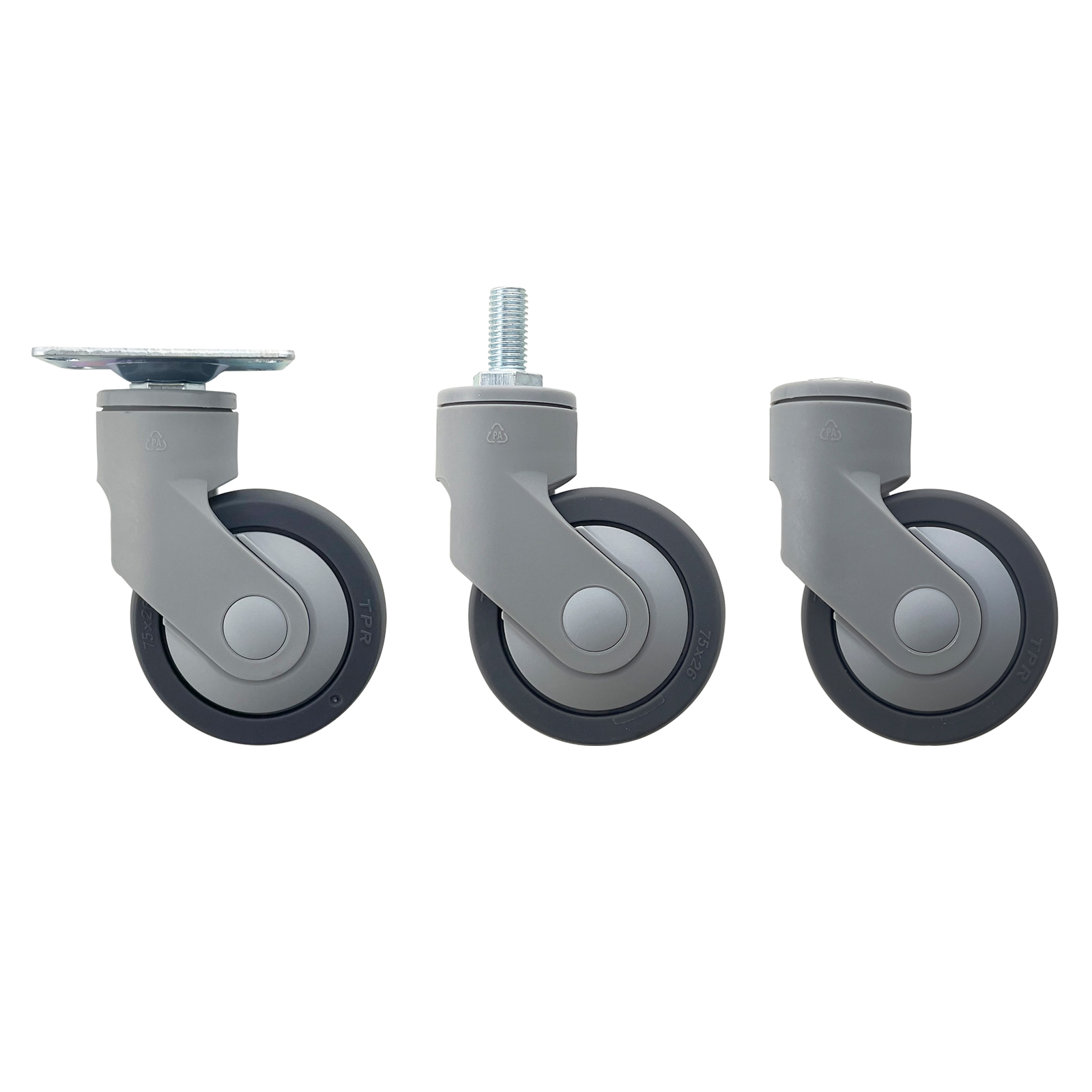In sensitive environments like hospitals, laboratories, and research facilities, the mobility of medical and lab equipment is critical, but it must be done quietly, safely, and precisely. The solution? Choosing the right casters for medical equipment and casters for lab tables.
Whether you’re outfitting a mobile anesthesia machine, a microscope workstation, or a rolling lab bench, using the right caster wheels ensures smooth, silent movement without compromising equipment stability or safety. In this guide, we’ll walk through key features, recommended materials, and important considerations when selecting quiet caster wheels for lab and medical environments.
Why Casters Matter for Lab and Medical Applications?
Casters are more than just wheels—they directly impact how equipment performs in real-world, often high-stakes environments. The right medical caster wheels can:
● Ensure vibration-free mobility for precision instruments
● Maintain sterility in cleanroom or hospital conditions
● Enable easy maneuverability in tight or crowded spaces
● Prevent floor damage from repeated movement
● Allow brake locking for fixed positioning
Key Considerations When Choosing Casters for Medical or Lab Equipment
● Load Capacity and Equipment Weight
Start by calculating the total weight of your equipment. Then, choose casters with a combined load rating at least 25% higher than the actual load to ensure safety and durability.
Example: For a 200 kg lab bench, use four casters rated for 75 kg each minimum.
● Noise Reduction (Quiet Caster Wheels)
Hospitals and labs require low-noise environments. Choose quiet caster wheels made from:
TPR (Thermoplastic Rubber) – absorbs shock and rolls silently
Polyurethane wheels – smooth-rolling, floor-safe, and quiet
Nylon-core casters with rubber tread – combines strength and silence
Look for precision ball bearings for smooth, noise-free rotation.
● Chemical Resistance and Cleanliness
In labs and hospitals, exposure to disinfectants, alcohol, and corrosive agents is common. Opt for casters made from stainless steel or medical-grade plastic, which resist rust and are easy to clean.
Choose sealed bearings and non-marking wheels to prevent floor contamination and ensure hygiene compliance in sterile environments.
● Brake and Locking Mechanism
Equipment must stay stationary during operation. Look for casters with brake and lock systems, such as:
Total lock casters – lock both the wheel and the swivel
Directional lock casters – lock the wheel in a forward direction
Central locking casters – often used on hospital beds and carts for convenience
Brake functionality is essential for precision instruments, mobile lab tables, and diagnostic equipment carts.
● Mobility and Swivel Action
Choose swivel casters for full 360° rotation and dual-wheel casters for better weight distribution. Combining 2 fixed + 2 swivel casters with brakes is the most stable setup for lab benches and medical carts.
● Mounting Type
Common caster mountings include:
Plate-mounted casters – stable, suitable for heavy-duty lab tables
Threaded stem casters – flexible, used for lighter medical stands
Expanding adapters – for inserting into tube-style legs
Make sure the mounting fits your equipment leg dimensions.
TPR Movable Plate Mount Caster
Top Applications for Medical and Lab Casters
● Mobile Lab Tables
For mobile laboratory workbenches and tables, quiet swivel casters with total-lock brakes are essential. These allow smooth, vibration-free movement and ensure that the table stays firmly in place during experiments or delicate procedures. Precision is critical in lab work, and the right caster wheels help prevent accidental shifts.
● Medical Equipment Carts
From anesthesia machines to ECG carts, casters for medical equipment must offer a balance of mobility and control. Polyurethane wheels with individual brakes are a popular choice, as they roll easily on hospital floors while offering solid grip and reduced noise.
● Microscope and Diagnostic Stands
Precision instruments like microscopes demand high stability. Anti-vibration caster wheels with locking stems are recommended here, as they reduce movement and keep the equipment level and secure. These casters are especially useful for mobile diagnostic devices that need to be repositioned frequently without losing calibration.
● Hospital Beds and Stretchers
Heavy-duty central locking caster systems are commonly used on hospital beds and gurneys. These casters allow medical staff to lock all wheels at once from a single control, providing both convenience and patient safety during transport or treatment.
● IV Poles and Mobile Devices
Lightweight medical devices, such as IV poles, mobile infusion pumps, and portable ultrasound machines, benefit from small swivel casters with quiet wheels. These provide smooth navigation through tight spaces like patient rooms and hallways while maintaining a low noise profile.
● Cleanroom and Sterile Environments
For environments with strict hygiene standards, such as pharmaceutical labs or operating rooms, stainless steel sealed casters are ideal. They are resistant to chemicals, easy to sanitize, and designed to prevent contamination, making them perfect for sterile applications.
Material Guide for Lab & Medical Casters
● Thermoplastic Rubber (TPR) Casters
TPR caster wheels are an excellent choice for environments where low noise is crucial. Their soft tread absorbs shock and minimizes vibration, making them perfect for sensitive lab equipment and quiet hospital zones.
● Polyurethane Casters
Polyurethane caster wheels are known for their durability, non-marking properties, and ability to glide smoothly across tile and linoleum floors. They are widely used in both lab and hospital settings due to their high load capacity and long lifespan.
● Stainless Steel Components
In medical and lab environments where frequent cleaning is necessary, casters with stainless steel brackets and sealed bearings offer superior resistance to rust, corrosion, and chemical damage. These are ideal for surgical equipment, cleanrooms, and any application requiring sterilization.
● Rubber-Tread Casters
For extra shock absorption and grip, casters with rubber treads provide added protection for delicate instruments. They’re great for applications where vibration must be minimized, such as mobile testing stations or sensitive diagnostic carts.
Quiet Caster Wheels for Medical Use
Conclusion
Choosing the right casters for lab tables and casters for medical equipment isn’t just about movement—it’s about precision, hygiene, safety, and performance. Quiet, locking, non-marking caster wheels are essential for environments where precision instruments are used and stability is critical.
Whether you're outfitting a high-end medical cart, a diagnostic stand, or a mobile lab workstation, always select quiet caster wheels with brakes, chemical resistance, and load-rated strength to meet your facility’s demands.
Investing in the right caster system not only improves functionality but also contributes to safer, more efficient healthcare and research environments. Manywell, as a manufacturer of medical and laboratory casters, welcomes you to contact us to help you with the decision-making process on how to choose equipment casters.


